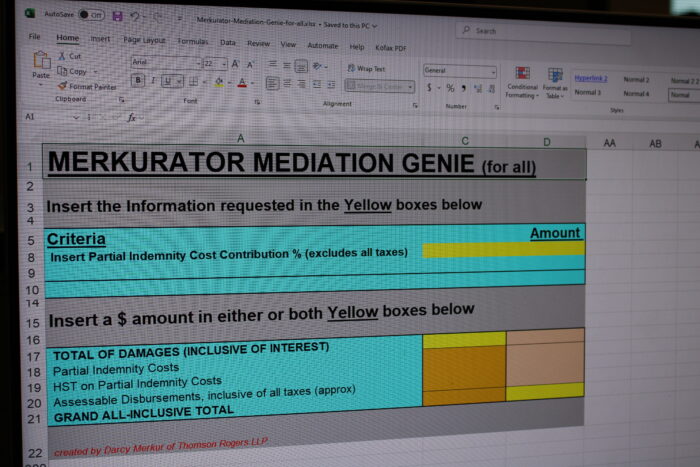The Overwhelmed LAT Process
Author(s): Darcy R. Merkur
January 6, 2025

A few months ago, I posted an opinion piece about the genesis of the LAT accident benefit dispute resolution process. I reviewed how it stemmed from Justice Cunningham’s recommendations for an improved dispute resolution system. Justice Cunningham’s 2014 report included 28 recommendations and included a vision for a dispute resolution process that took no longer than six months from start to finish.
I have now obtained Freedom of Information (FOI) data about the number of LAT applications and the length of the LAT process. The results, outlined below, show a dispute resolution system that is overburdened and takes way too long.
When it comes to the number of LAT applications, the LAT started off with roughly 6,600 applications in its first year being 2016/2017. The number of applications has increased gradually to over 16,000 per year as of 2023/2024.

When the LAT started handling accident benefit disputes in 2016, there was no line-up. Everyone was at the front of the line. As a result, the initial average time between the LAT application and a LAT decision was, impressively, just half a year.
Looking in more detail at the LAT timeline, after a LAT application is filed, the first thing that should happen is for the parties to participate in a LAT Case Conference. According to the LAT’s own website, the “Case Conferences will usually take place within 45-60 days of the response being received”.
According to FOI data, the time between a LAT application and a LAT Case Conference is now well over 6 months long (and went as high as a year long in 2023).

When it comes to getting to a LAT decision, the time between a LAT application and a LAT decision is now about 2 years! These are supposed to be timely decisions associated with day-to-day accident benefit entitlement disputes.

Make your own opinions.
It would be hard to argue that the LAT process works from an ‘access to justice’ perspective. The process is too long. Notably, the process has also been criticized as being unfair to claimants based on data associated with LAT decisions showing skewed insurer-friendly results.
At the same time, the LAT process is expensive and provides no mechanism for claimants to recover their costs associated with pursuing even successful disputes.
We need a new system. One that gets decisions in weeks not months. One where decisions reflect a balance of success between claimants and insurers. One where billion dollar insurers pay for the successful claimant’s legal costs.
Until the system is fixed, the Government should remove the prohibition on advancing accident benefit disputes to the Courts. At least the Court has jurisdiction to make things right where circumstances warrant.
Darcy Merkur is a highly regarded Ontario trauma lawyer helping accident victims such as pedestrians, cyclists and motorists, who have sustained catastrophic injuries.
Darcy is the first lawyer in Canada to be qualified as a Certified Brain Injury Specialist by the Brain Injury Association of America. In addition, Darcy has been recognized as a Certified Specialist in Civil Litigation by the Law Society of Ontario, is listed in peer-reviewed publications – Lexpert® and The Best Lawyers™ in Canada, is ranked AV Preeminent® in Martindale-Hubbell ® and is a partner at Thomson Rogers, one of Ontario’s Top 10 Personal Injury Law Firms as selected by Canadian Lawyer Magazine, and ranked one of the Best Law Firms in Canada by The Globe and Mail.
Darcy can be reached at 416-868-3176 or by EMAIL.
Share this




